
Mummy portraits or Fayum mummy portraits are a type of naturalistic painted portrait on wooden boards attached to upper class mummies from Roman Egypt. They belong to the tradition of panel painting, one of the most highly regarded forms of art in the Classical world. The Fayum portraits are the only large body of art from that tradition to have survived. They were formerly, and incorrectly, called Coptic portraits.

Giovanni di Niccolò de Luteri, better known as Dosso Dossi, was an Italian Renaissance painter who belonged to the School of Ferrara, painting in a style mainly influenced by Venetian painting, in particular Giorgione and early Titian.

Pierre Mignard or Pierre Mignard I, called "Mignard le Romain" to distinguish him from his brother Nicolas Mignard, was a French painter known for his religious and mythological scenes and portraits. He was a near-contemporary of the Premier Peintre du Roi Charles Le Brun with whom he engaged in a bitter, life-long rivalry.

The J. Paul Getty Museum, commonly referred to as the Getty, is an art museum in Los Angeles, California housed on two campuses: the Getty Center and Getty Villa.

A panel painting is a painting made on a flat panel of wood, either a single piece or a number of pieces joined together. Until canvas became the more popular support medium in the 16th century, panel painting was the normal method, when not painting directly onto a wall (fresco) or on vellum. Wood panels were also used for mounting vellum paintings.

Simon Bening was a Flemish miniaturist, generally regarded as the last major artist of the Netherlandish tradition.

Joseph, Baron Ducreux was a French noble, portrait painter, pastelist, miniaturist, and engraver, who was a successful portraitist at the court of Louis XVI of France, and resumed his career at the conclusion of the French Revolution. He was made a baron and premier peintre de la reine, and drew the last portrait ever made of Louis XVI before the king's execution. His less formal portraits reflect his fascination with physiognomy and show an interest in expanding the range of facial expressions beyond those of conventional portraiture.

Simon Marmion was a French and Burgundian Early Netherlandish painter of panels and illuminated manuscripts. Marmion lived and worked in what is now France but for most of his lifetime was part of the Duchy of Burgundy in the Southern Netherlands.
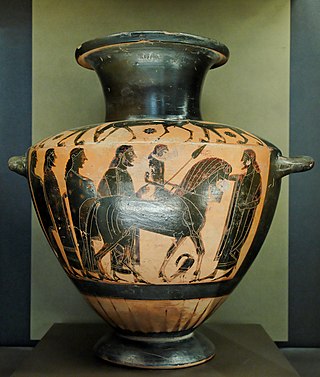
Lydos was an Attic vase painter in the black-figure style. Active between about 560 and 540 BC, he was the main representative of the '’’Lydos Group’’’. His signature, ό Λυδός, ho Lydos ", inscribed on two vases, is informative regarding the cultural background of the artist. Either he immigrated to Athens from the Lydian empire of King Kroisos, or he was born in Athens as the son of Lydian parents. In any case, he learned his trade in Athens.

The Amasis Painter was an ancient Greek vase painter who worked in the black-figure technique. He owes his name to the signature of the potter Amasis, who signed twelve works painted by the same hand. At the time of the exhibition, "The Amasis Painter and His World" (1985), 132 vases had been attributed to this artist.

Pietro Paolini, called il Lucchese was an Italian painter of the Baroque period. Working in Rome, Venice and finally his native Lucca, he was a follower of Caravaggio to whose work he responded in a very personal manner. He founded an Academy in his hometown, which formed the next generation of painters of Lucca.

Fourteen Rembrandt paintings are held in collections in Southern California. This accumulation began with J. Paul Getty's purchase of the Portrait of Marten Looten in 1938, and is now the third-largest concentration of Rembrandt paintings in the United States. Portrait of Marten Looten is now housed at the Los Angeles County Museum of Art (LACMA).
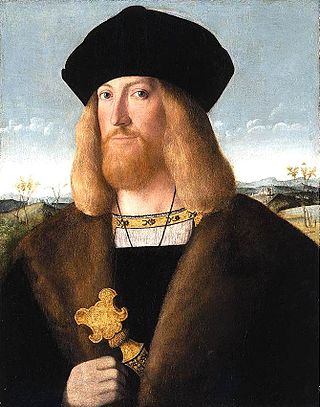
Bartolomeo Veneto was an Italian painter who worked in Venice, the Veneto, and Lombardy. During his time in Venice, he studied under Gentile Bellini. The little information available about Bartolomeo's life has been derived from his signatures, dates, and inscriptions. His best-known works are portraits or pictures with portrait-like character. Bartolomeo's later works, and especially those done on commission in Milan, indicate an influence from the artist Leonardo da Vinci.
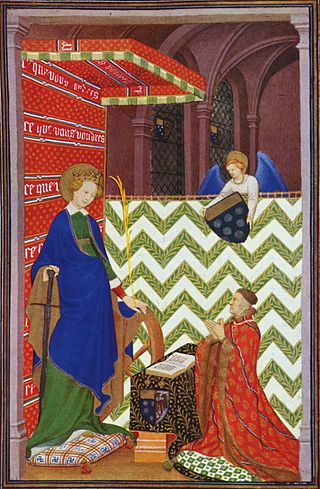
The Boucicaut Master or Master of the Hours for Marshal Boucicaut was an anonymous French or Flemish miniaturist and illuminator active between 1400 and 1430 in Paris. He worked in the International Gothic style.

Amasis was an ancient Attic potter, active in Athens between 560/550 and 530/520 BC. Amasis’s pottery workshop also employed a well-known painter, who is conventionally named the Amasis Painter after the potter, and generally considered one of the best Archaic vase painters. His works are mostly black-figure, but some red-figure vase paintings by him do occur. He and Exekias produced the first major painted amphorae with a narrative image on front and back, respectively. Famous works:
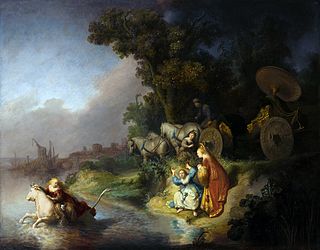
Rembrandt Harmenszoon van Rijn's The Abduction of Europa (1632) is one of his rare mythological subject paintings. The work is oil on a single oak panel and now located in the J. Paul Getty Museum. The inspiration for the painting is Ovid's Metamorphoses, part of which tells the tale of Zeus's seduction and capture of Europa. The painting shows a coastal scene with Europa being carried away in rough waters by a bull while her friends remain on shore with expressions of horror. Rembrandt combined his knowledge of classical literature with the interests of the patron in order to create this allegorical work. The use of an ancient myth to impart a contemporary thought and his portrayal of the scene using the High Baroque style are two strong aspects of the work.

Allegory of Fortune, sometimes also named La Fortuna, is an oil painting on canvas featuring the Roman goddess of fortune, Fortuna, that was created c. 1658 or 1659 by the Italian baroque painter Salvator Rosa. The painting caused uproar when first exhibited publicly and almost got the painter jailed and excommunicated. Bearing initials but undated, it measures 200.7 by 133 centimetres. Rosa was known for his landscape paintings, but also worked in the sphere of mythology, witchcraft, portraits, and satire. Since 1978 it has been in the J. Paul Getty Museum in Malibu, California.
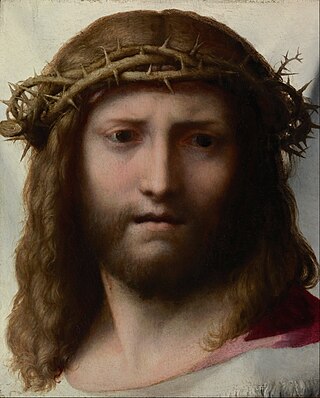
Head of Christ is a painting in oil on panel by the Italian Renaissance painter Correggio, dated 1521. It depicts the head of Christ, wearing the crown of thorns. In the background there is a white cloth showing that the image represents the Veil of Veronica, but Christ's head is given volume through alternate use of light and dark shadows. The painting is in the J. Paul Getty Museum in Malibu, Los Angeles. Correggio was known for creating some of the most sumptuous religious paintings of the period. The Getty Museum considers this artwork as one of the masterpieces of painting held by the museum.
Beth Cohen is an American classical archaeologist. She studied under German-American art historian Dietrich von Bothmer at the Institute of Fine Arts of New York University where she received her doctorate on bilingual vase painting of Ancient Greece. Her dissertation, Attic Bilingual Vases and their Painters is the main book used in the study of bilingual vase painting. Cohen became a specialist in the field of Greek vase painting, especially on rare forms of Attic vase painting. She organized the 2006 exhibition The colors of clay. Special techniques in Athenian vases at J. Paul Getty Museum in Malibu.

Portrait of Anne, Countess of Chesterfield is a large oil-on-canvas painting by the English portrait and landscape artist Thomas Gainsborough, completed between 1777 and 1778. It shows Anne Stanhope, wife of Philip Stanhope, 5th Earl of Chesterfield, sitting in a blue and while satin dress, sitting in a garden, and is one of the best known of Gainsborough's many portraits of English aristocrats.


















